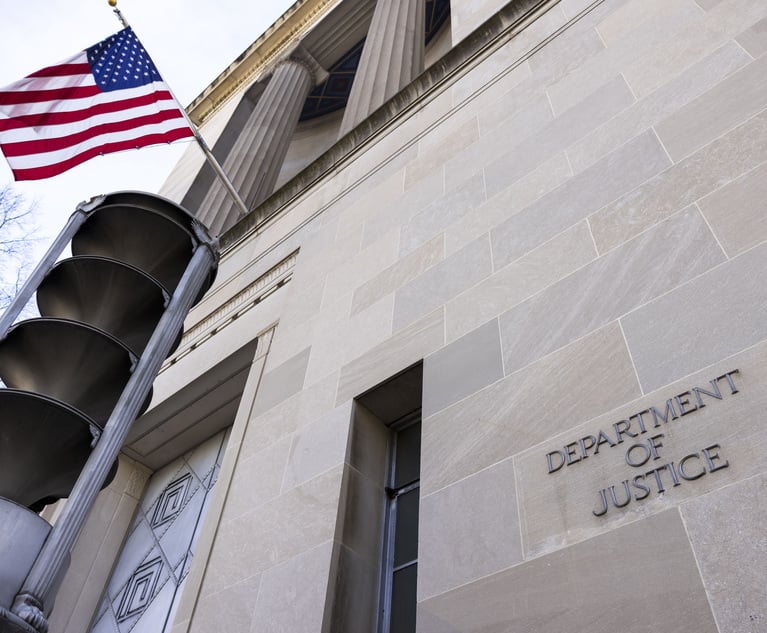 Mark D. Harris and Margaret A. Dale
Mark D. Harris and Margaret A. Dale Establishing Loss Causation in Securities Fraud Class Actions
In their Corporate and Securities Litigation column, Margaret A. Dale and Mark D. Harris discuss 'In re BofI Holding, Inc. Sec. Litig.', in which a divided Ninth Circuit panel grappled with two types of disclosures: those that originate in whistleblower complaints, and those based on publicly available information. The decision nicely embodies a number of the tensions at play in the jurisprudence of loss causation.
December 14, 2020 at 12:45 PM
8 minute read
The elements of securities fraud are well established. A plaintiff must show: (1) a material misrepresentation or omission (2) made with scienter (3) in connection with the purchase or sale of a security; (4) reliance on the misrepresentation or omission; (5) economic loss; and (6) loss causation. The last element—a causal connection between the defendant's fraudulent conduct and the plaintiff's economic loss—is often the most difficult to prove, especially in a "fraud on the market" case. Under Dura Pharmaceuticals v. Broudo, 544 U.S. 336 (2005), the standard approach is to show that the defendant's misrepresentations artificially inflated the purchase price for the plaintiff's shares and that the subsequent revelation of the truth later caused their value to drop, thereby producing the economic loss.
What kinds of revelations (also known as "corrective disclosures") count? The easiest cases involve admissions by the defendant or findings by a governmental regulator or tribunal that wrongdoing occurred. In the recent case of In re BofI Holding, Inc. Sec. Litig., 977 F.3d 781 (9th Cir. 2020), a divided Ninth Circuit panel grappled with two other types of disclosures: those that originate in whistleblower complaints, and those based on publicly available information. The majority held that both could qualify as corrective disclosures in theory, although it found that the plaintiffs here had not established loss causation as to the latter. A separate opinion argued that whistleblower complaints should not qualify without independent corroboration, while publicly available information never constitutes a corrective disclosure.
This content has been archived. It is available through our partners, LexisNexis® and Bloomberg Law.
To view this content, please continue to their sites.
Not a Lexis Subscriber?
Subscribe Now
Not a Bloomberg Law Subscriber?
Subscribe Now
NOT FOR REPRINT
© 2025 ALM Global, LLC, All Rights Reserved. Request academic re-use from www.copyright.com. All other uses, submit a request to [email protected]. For more information visit Asset & Logo Licensing.
You Might Like
View All
'A Shock to the System’: Some Government Attorneys Are Forced Out, While Others Weigh Job Options
7 minute read
'Serious Legal Errors'?: Rival League May Appeal Following Dismissal of Soccer Antitrust Case
6 minute read
How Some Elite Law Firms Are Growing Equity Partner Ranks Faster Than Others
4 minute read
Law Firms Mentioned
Trending Stories
Who Got The Work
J. Brugh Lower of Gibbons has entered an appearance for industrial equipment supplier Devco Corporation in a pending trademark infringement lawsuit. The suit, accusing the defendant of selling knock-off Graco products, was filed Dec. 18 in New Jersey District Court by Rivkin Radler on behalf of Graco Inc. and Graco Minnesota. The case, assigned to U.S. District Judge Zahid N. Quraishi, is 3:24-cv-11294, Graco Inc. et al v. Devco Corporation.
Who Got The Work
Rebecca Maller-Stein and Kent A. Yalowitz of Arnold & Porter Kaye Scholer have entered their appearances for Hanaco Venture Capital and its executives, Lior Prosor and David Frankel, in a pending securities lawsuit. The action, filed on Dec. 24 in New York Southern District Court by Zell, Aron & Co. on behalf of Goldeneye Advisors, accuses the defendants of negligently and fraudulently managing the plaintiff's $1 million investment. The case, assigned to U.S. District Judge Vernon S. Broderick, is 1:24-cv-09918, Goldeneye Advisors, LLC v. Hanaco Venture Capital, Ltd. et al.
Who Got The Work
Attorneys from A&O Shearman has stepped in as defense counsel for Toronto-Dominion Bank and other defendants in a pending securities class action. The suit, filed Dec. 11 in New York Southern District Court by Bleichmar Fonti & Auld, accuses the defendants of concealing the bank's 'pervasive' deficiencies in regards to its compliance with the Bank Secrecy Act and the quality of its anti-money laundering controls. The case, assigned to U.S. District Judge Arun Subramanian, is 1:24-cv-09445, Gonzalez v. The Toronto-Dominion Bank et al.
Who Got The Work
Crown Castle International, a Pennsylvania company providing shared communications infrastructure, has turned to Luke D. Wolf of Gordon Rees Scully Mansukhani to fend off a pending breach-of-contract lawsuit. The court action, filed Nov. 25 in Michigan Eastern District Court by Hooper Hathaway PC on behalf of The Town Residences LLC, accuses Crown Castle of failing to transfer approximately $30,000 in utility payments from T-Mobile in breach of a roof-top lease and assignment agreement. The case, assigned to U.S. District Judge Susan K. Declercq, is 2:24-cv-13131, The Town Residences LLC v. T-Mobile US, Inc. et al.
Who Got The Work
Wilfred P. Coronato and Daniel M. Schwartz of McCarter & English have stepped in as defense counsel to Electrolux Home Products Inc. in a pending product liability lawsuit. The court action, filed Nov. 26 in New York Eastern District Court by Poulos Lopiccolo PC and Nagel Rice LLP on behalf of David Stern, alleges that the defendant's refrigerators’ drawers and shelving repeatedly break and fall apart within months after purchase. The case, assigned to U.S. District Judge Joan M. Azrack, is 2:24-cv-08204, Stern v. Electrolux Home Products, Inc.
Featured Firms
Law Offices of Gary Martin Hays & Associates, P.C.
(470) 294-1674
Law Offices of Mark E. Salomone
(857) 444-6468
Smith & Hassler
(713) 739-1250






